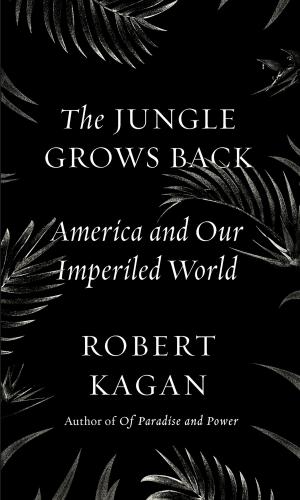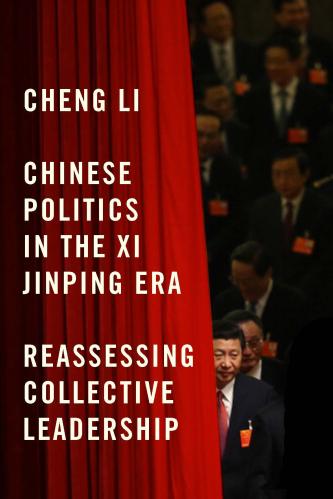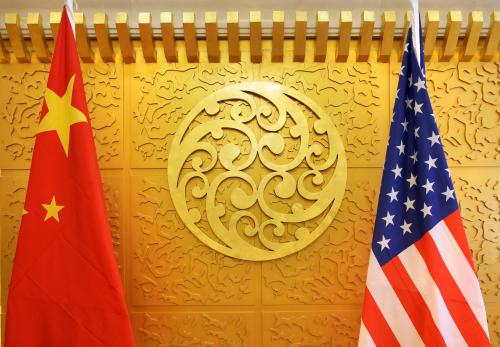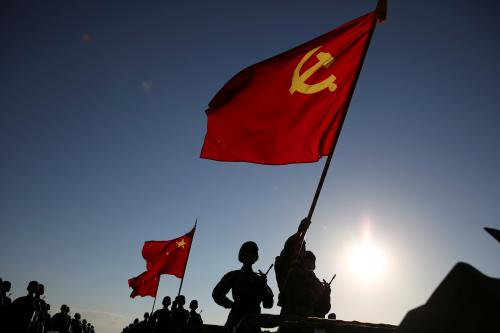U.S.-China ties must be managed to avoid clashes in 2019, especially with a volatile White House, argues Bruce Jones. This piece originally appeared in the Nikkei Asian Review.
The year 2018 has proved to be a time of turbulence in U.S.-China relations, with the Korean Peninsula, trade and the South China Sea all making headlines.
But 2018 will prove to be more than just a year of turbulence: We will look back on it as a turning point in U.S.-China relations, the closing of an era of expanding cooperation. That era dates from China’s entry into the World Trade Organization in 2001, and reached its most expansive phase in the wake of the global financial crisis, under U.S. President Barack Obama. There were even fears in the world of a “G-2,” of a U.S.-China condominium that would leave little room for anybody else. There is little risk of a G-2 now.
But if 2018 was an end of an era, what comes next and how rocky will the transition be?
Asian observers always keenly follow American politics, but never more so than now as they engage in a kind of American Kremlinology to discern how much of the turbulence and how much of the strategic shift in China is being driven by Trump, and how much is a function of wider dynamics. The short answer: The turbulence is Trump, especially on trade; but the deeper shift is structural.
On the American side, we see a course correction, and a “whole of society” revaluation of China. A loss of confidence in China on the part of American business, a backlash against China’s human rights record and overseas political behavior, and pushback in strategic affairs characterize the sentiment. Few in the United States would align with every element of Vice President Michael Pence’s flame-throwing speech on China, but the wider administration’s tougher line on China has widespread support. Only a few voices in the financial and technology industries still advocate deep cooperation.
What’s causing all of this? First, the answer lies in the evolution of strategy between Jinping and his predecessor Hu Jintao. It was likely inevitable as China’s economic growth gave it global interests, but the shift in tone under Xi has been marked. It reflects President Xi’s ambitions as well as the opportunity caused by the weakness of the West after the global financial crisis. Xi’s more assertive strategy includes consolidating control over the military and increasing defense spending; intensifying efforts to militarize the South China Sea; a crackdown internally on dissent; and, abroad, a major uptick in political interference—sometimes using lending through the Belt and Road Initiative for leverage, sometimes using more pernicious measures. Add to this China’s tactical coordination with the Russians when Moscow has engaged in what can only be understood as an act of war against the American political system. Trump has been turbulent; Xi has been aggressive, perhaps reckless.
Much of the foundation for this was laid under Hu, but Xi accelerated the timeline and sharpened the edges—and in so doing put paid to residual hopes of China’s “peaceful rise.” Whether this ends in a cold war, in outright conflict or in a form of managed competition, is the policy question of our time. Despite the growth of anti-China sentiment coming from the United States, outright bilateral conflict is not preordained. But relations are getting worse, and could rapidly deteriorate further.
The Trump administration’s China policy comes in two parts. From the strategic quarter, the effort is to push back on Chinese assertiveness through a framework of “peace through strength”—using American strength to resist Chinese adventurism, but with the medium term objective of returning U.S.-China relations to a stable state. The problem is that the strategy team don’t set the terms of engagement on second agenda, the trade and economic issues.
Some of the Trump administration’s economic actors are pursuing economic re-nationalization and decoupling from China. Much of their strategy is based on a misunderstanding of China’s role in global supply chains and an overestimation of American bargaining power. While others on the economic team and the political strategists have a more realistic world view, clashes within Trump’s team and President Donald Trump’s inherent volatility will inevitably produce more tension and unpredictability in U.S.-China relations.
Clashes within Trump’s team and President Donald Trump’s inherent volatility will inevitably produce more tension and unpredictability in U.S.-China relations.
The unpredictability has produced a welcome degree of discomfort in Xi’s inner circle and some debate about Beijing’s challenge to the United States. Still, it is unlikely to temper Xi’s ambition for long, or to limit the outward consequences of China’s miscalculations on political interference or of its increasingly pervasive crackdown on human rights.
The arrest of the CFO of Huawei means the year ended on a particularly troublesome note. It was a move within the limits of what is feasible under U.S. extradition and sanctions law, but it is an aggressive move, even if justified by Huawei’s alleged sanctions-busting with Iran, and espionage in the United States. China’s response was worse, detaining two innocent Canadians in retaliation, invoking state security. China’s intent may have been to punish Canada; it may have been to deter other countries from accepting U.S. extradition requests, but in so doing China has seriously underestimated the chilling effect across those remaining parts of American society still seeking cooperation with the Chinese.
It is possible that 2019 will see some respite in the tariff war as Trump calculates the economic and political cost of China’s retaliation. This is likely to be a cease fire, not a peace agreement. 2019 will also see the shift in the House of Representatives to the Democratic Party and the arrival in that House of a cohort of elected representatives with deep grounding in foreign policy and a strong concern for human rights. The brutality of China’s crackdown on Xinjiang, its export of authoritarian digital technologies, and use of the Belt and Road Initiative to preposition itself for bases in Africa and Latin America are likely to draw more focused ire.
The era of U.S.-China cooperation is drawing to a close. What follows is strategic competition—but not necessarily conflict. Economic cooperation can be maintained, and cooperation on some key global issues like pandemic disease control can be resumed. The year 2020 will arrive quickly with a potential change of U.S. president—and the Chinese leadership knows that President Donald Trump, and his preferred tools of tweets and tariffs, may prove an ephemeral phenomenon. But the strategic shift in U.S. thinking on China will endure. The new challenge for Washington and Beijing is to find the framework and the personalities to manage the competition and avoid a descent into conflict.
The Brookings Institution is committed to quality, independence, and impact.
We are supported by a diverse array of funders. In line with our values and policies, each Brookings publication represents the sole views of its author(s).









Commentary
The era of U.S.-China cooperation is drawing to a close—What comes next?
January 7, 2019